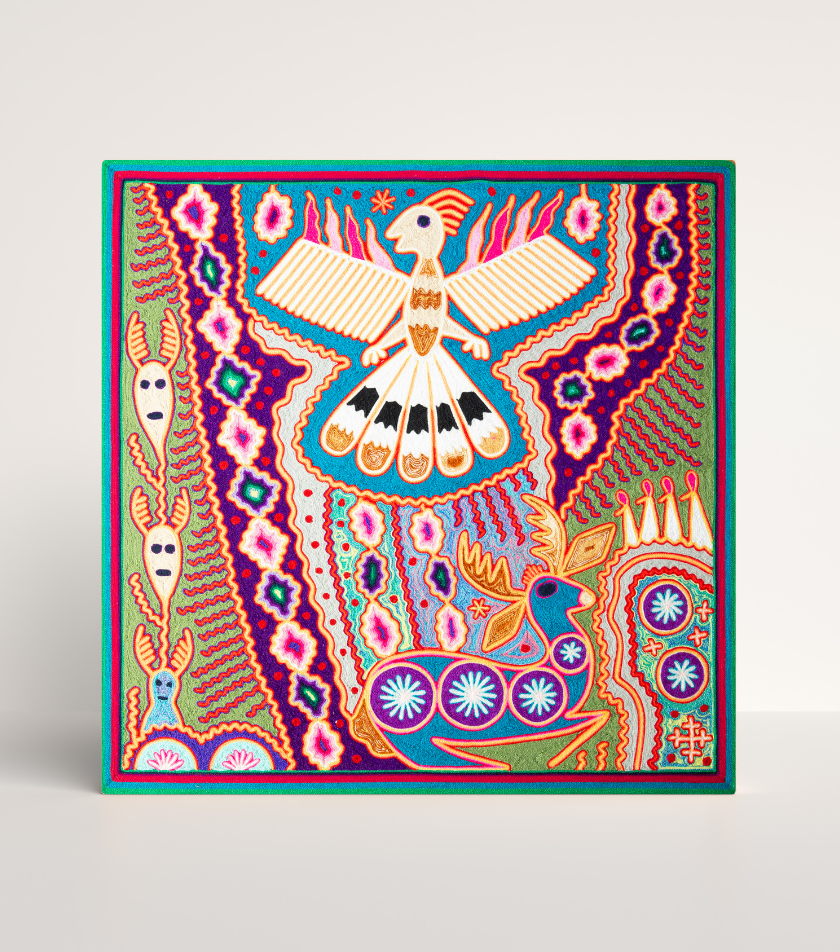WIXÁRIKA YARN PAINTINGS
The majority of our one-of-a-kind yarn paintings are crafted by the visionary Wixárika artist and mara-akame (shaman), Eligio Carrillo. Each yarn painting holds profound spiritual significance, serving as a Nierika, or sacred doorways to the divine. Each piece is a passage into the spiritual world as envisioned by the shaman.
Far more than decorative art, these sacred paintings act as mediums for storytelling and communication with the divine, bridging the earthly and spiritual realms. The imagery often reflects elements from the Wixárika world of gods and ancestors, featuring symbols such as the deer (Kauyumari), peyote cactus (Hikuri), god’s eye (Tsikuli), sun (Takuyasi), corn (Iku), and other revered animals like the snake (Kū) and eagle (Waríka). Each symbol holds deep meaning related to life, nature, spirituality, and ancestral wisdom.
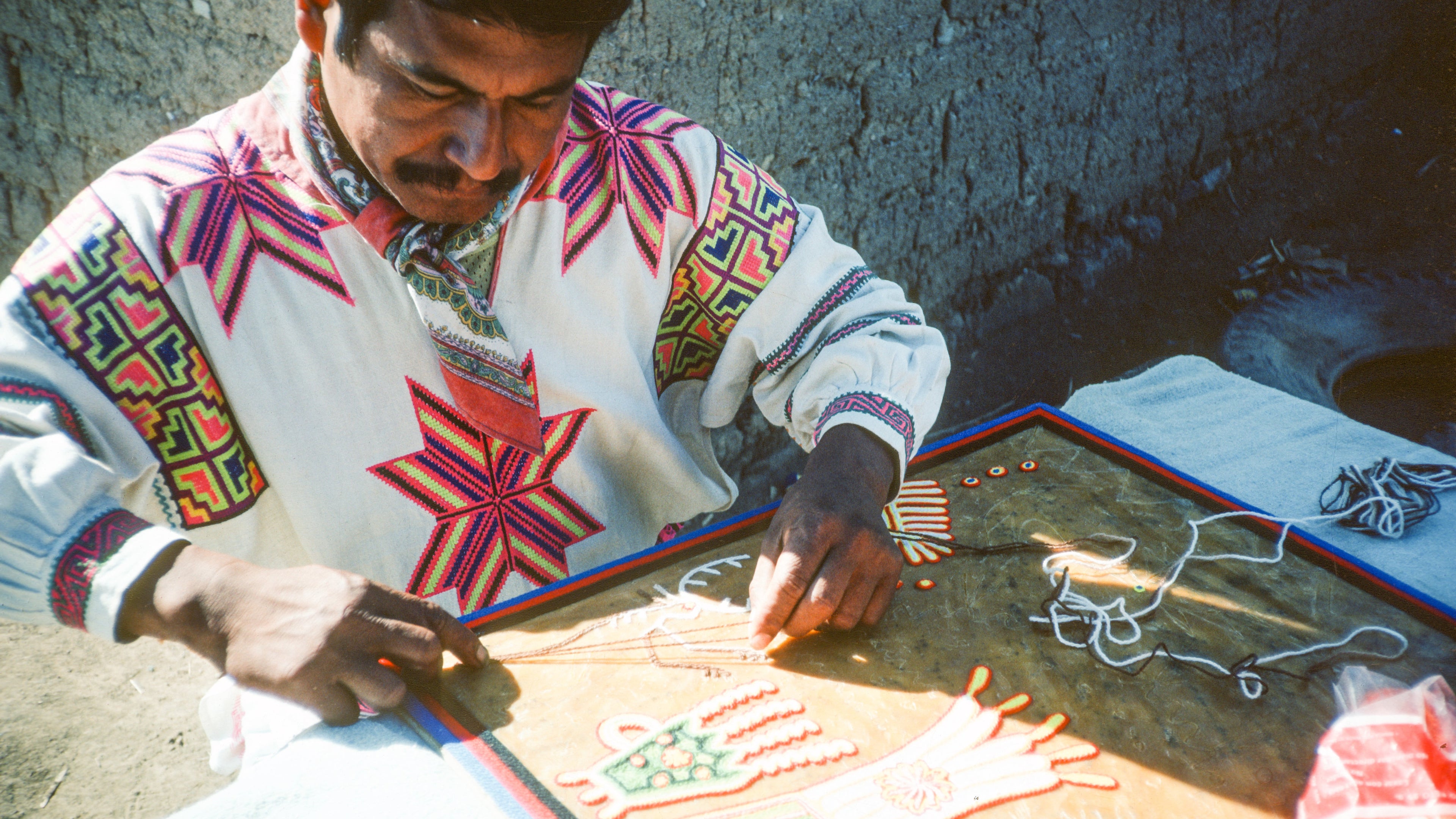



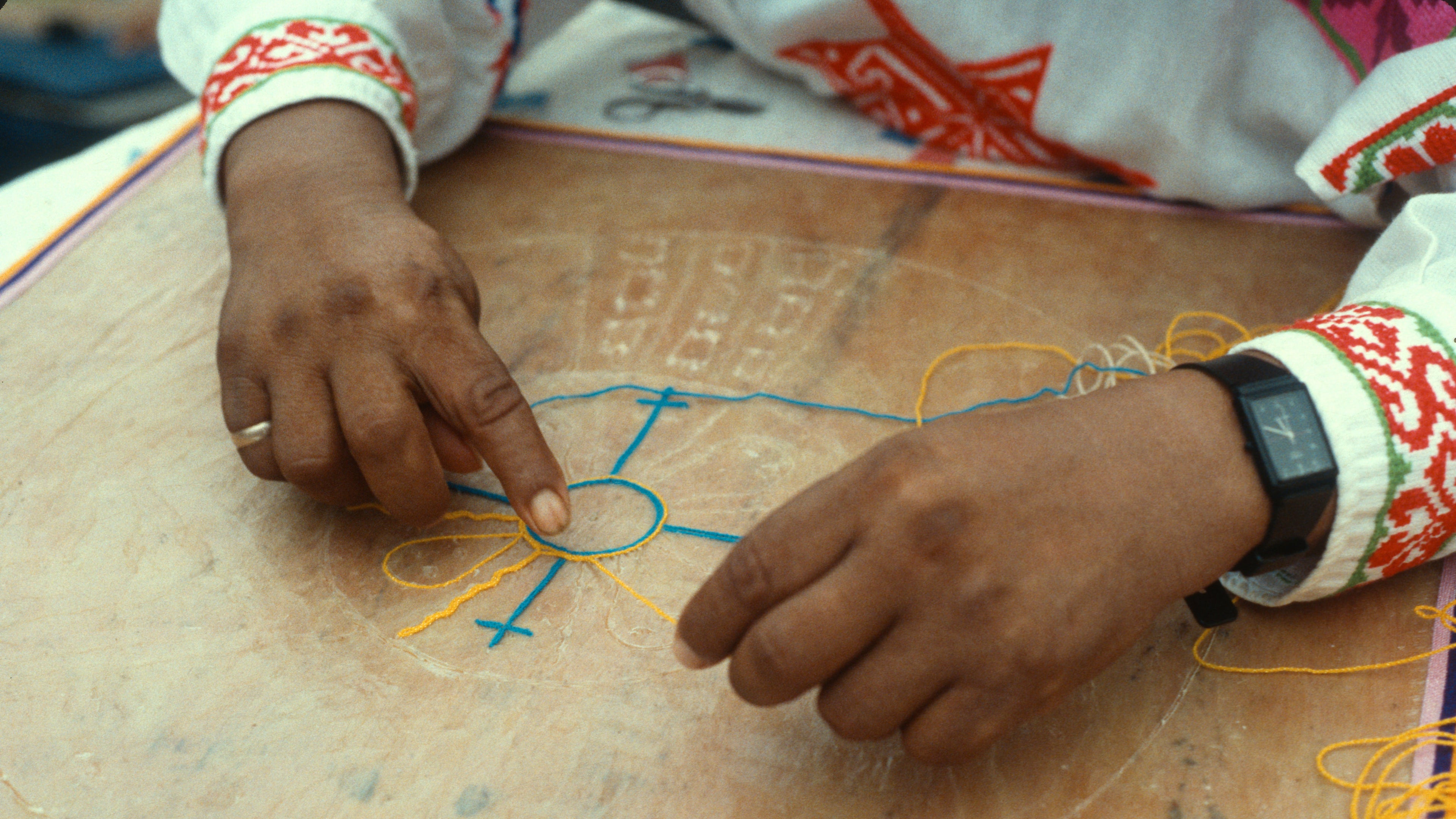

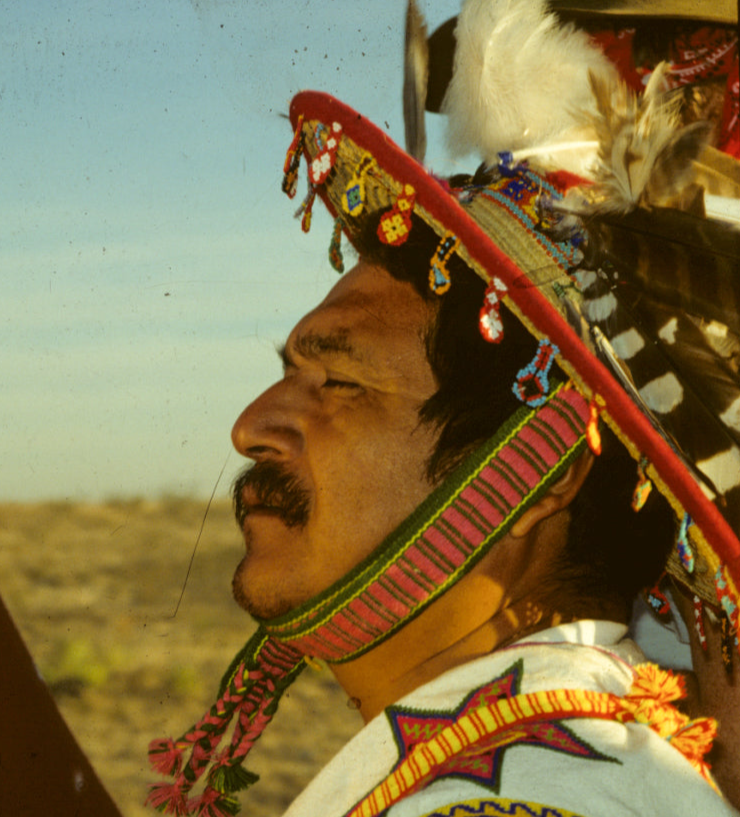

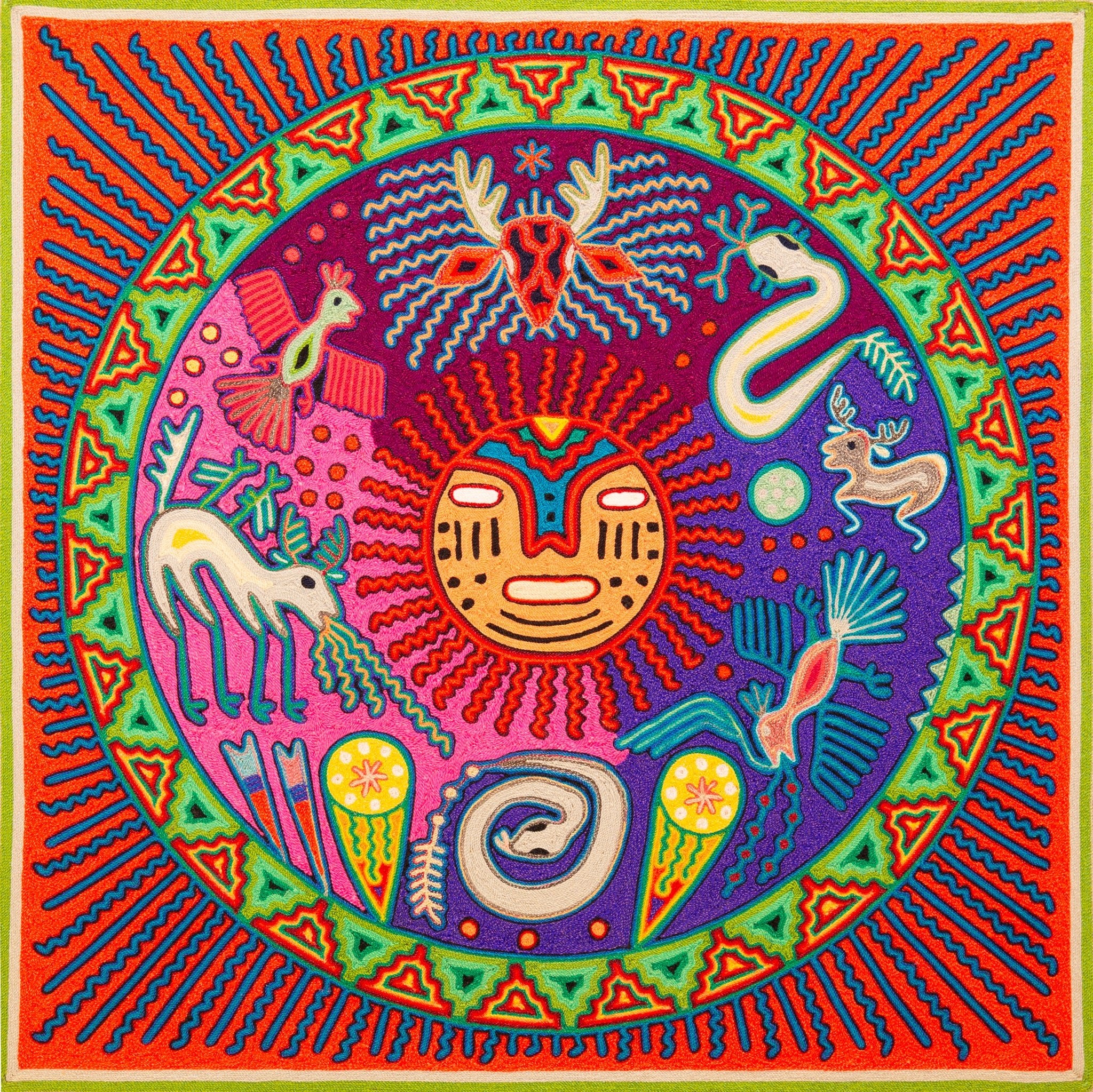

VISIONS OF COSMOLOGY
According to the Wixárika, yarn paintings carry the wisdom of the past, helping to transmit and pass on deeply impactful visions and dreams. They also believe that the imagery and sacred symbols of nature become alive through the medium of the art.
In Wixárika culture, it is said that the symbol of a deer in a yarn painting is not solely an artistic representation but rather a physical and spiritual extension of the deer itself. In this way, the art contains the energic essence of its depictions, helping to transmit the intuition of the deer spirit or the breath of life from the eagle into our hearts.



